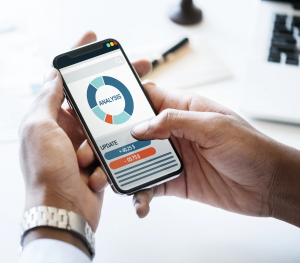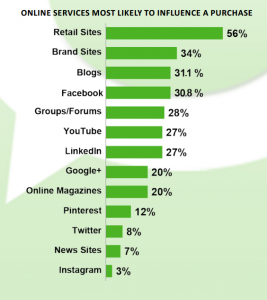— June 20, 2018

StartupStockPhotos / Pixabay
If there’s one thing to know about marketing in 2018, it’s that digital change is happening at such a rapid pace that only those most open to innovation are finding success. In the current market, only about 8% of businesses strategies will remain economically viable if they keep their existing business plan. So, how do you embrace digital transformation to avoid becoming one of the other 92% of companies that might get left behind…or worse, another Toys R Us?
The first step to digitizing your Strategy is to examine the weak areas of your organization’s existing strategies to figure out what you need to change. A few weeks ago, we explored 6 digital strategy pitfalls to avoid, to help you recognize why so many digital strategies are failing. This week, however, we’re going to look at the next steps in the equation with five tips to digitize your Strategy.
- Be ready for change
True transformational leaders are rethinking their business models and leveraging digital disruption. Arguably, the most important aspect of strategy digitization is to be open to changing the way you have traditionally approached it. In a market that’s developing as fast as this one, change is inevitable. It’s important to remain adaptable and embrace opportunities as they come. But, the best way to stay on top of the digital market is to stay five steps ahead of it.
For example, John Deere, the farming equipment manufacturer, might seem like the least likely company to digitize. Yet in their foray into helping their customers’ “farm better,” John Deere integrated digital tactics into farming equipment that hasn’t seen change for generations. Little did Kenny Chesney know, his tractor was about to get really sexy.
John Deere tractors and other farming equipment are now fortified with sensors that allow farmers to monitor soil conditions and automate change in response. They’ve even developed sprinklers that sync up with the weather, watering crops when they need it instead of on a regulated schedule. John Deere CEO, Samuel R. Allen, recently stated that their goal is to evolve farming equipment to the point of complete automation, “To a point that farmers will be able to monitor, manage and measure the status of virtually every plant in the field.”
You can look at digitizing your Strategy from the same angle that John Deere used to examine their products and update them for the new digital landscape. It is only through the willingness to fully examine the “Why” of your business that you can fully differentiate yourself in the marketplace and implement digital strategies and products that have never been seen before. Innovation requires taking a step back and repositioning your brand to meet your customers’ changing needs and make them the hero.
- Abandon the annual cycle
While it has worked in the past, the annual business cycle is not the way to succeed in 2018 and beyond. The digital world is expanding too quickly for the traditional cycle to keep up. Those who assess and implement change on just a yearly basis will get left behind faster than ever. Digital doesn’t wait until the year is over before making changes and neither should you.
One stellar example of a business embracing the break from a yearly cycle is BMW. They make continual improvements throughout the year and their strategy has helped them learn at a faster rate with quicker application than the traditional annual style. They also state that they’re focusing “more closely than ever before” on their customers’ needs. The best digital strategies break away from common tactics and present themselves in fresh, new ways, all the way down to a company timeline.
- Expand beyond “web analytics”
With digitization comes an overwhelming number of ways to measure progress, so how do you know which methods to use? Optimizing your digital strategies means not only updating your product, but also how you measure consumer interaction and conversations, like Vineyard Vines did to deliver a highly personalized experience to their customer base. Determining the number of hits on a blog post or bounce rate of a web page might seem helpful, but these web analytics are no longer the best way to measure engagement.
Digital marketing analytics are a more encompassing way to measure data. They don’t measure static, one-dimensional data, but rather, the effectiveness of your marketing Strategy, on and off a website – extending to social media and other venues of exploration. This also means that you can determine the true ROI of your marketing efforts and find out where the deficiencies are to adjust tactics accordingly.
- Optimize User Experience (UX)
If you want people to engage with your content, then it needs to be optimized and tailored for specific users. An optimized User Experience (UX) is designed with your unique audience in mind, which in turn means understanding what your user wants and needs. Adobe suggests asking these three questions to identify elements that might be blocking a user from completing the action you want them to take:
Is the content actually relevant to the user?
Does your user not complete their payment?
Is your user not reaching the call to action?
The answer to all of these questions starts with understanding your user, which in turn means clarifying your Story. You have to know the “Why” behind what you’re offering, why your users would want to buy it and how it impacts their lives. Optimizing UX can mean anything from making sure your landing page is intuitive, to ensuring your content is developed with a mobile user in mind. Put yourself in the shoes of your consumer and ask yourself how you can make it easier for them to engage with your brand, simultaneously guiding them through the Customer BuyWay.
- Base decisions on data, not intuition
Yes, marketing deals heavily in qualitative content like creative strategies and out-of-the-box thinking. However, that doesn’t mean that what you do is not based equally so on a firm ground of research and marketing performance statistics.
The digital world also brings with it new opportunities to measure and record data that facilitate new venues for success. According to Harvard Business Review, the most successful companies with digital marketing strategies are the ones that generate “actionable” data by testing different methods, not just by generating passive data that gets recorded and overlooked. Decisions supported by tested data, be it a specific type of content or a targeted CTA, are guaranteed to be more successful.
Digitizing your strategy doesn’t have to mean a change in the Story of your organization, just the way you execute it. A successful digital Strategy will evolve to serve the customer as they look for new, more advanced ways to solve problems that were previously unattainable. All of these tips for digitizing your strategy stem from the idea that your methods should change with (not against) the digital landscape.
For a more in-depth look at how to transform your Strategy, clarify your Story, or implement digital practices into your Systems, you can read more in my book, Marketing, Interrupted.
Business & Finance Articles on Business 2 Community
(70)
Report Post






